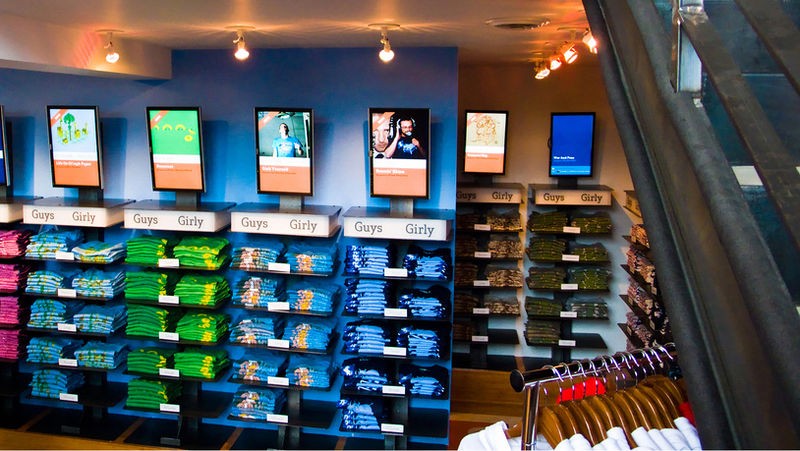If you have an interest in the retail world beyond just going shopping occasionally, then it can’t have escaped your notice that it’s struggling, badly. Covid-19 is the ruthless bully, kicking its victim when it was already on the ground begging for mercy. Slow to react to the rise of online purchasing and changing consumer habits, retailers, brands and their advisors have been scrabbling around for answers for a long while.
What I find disappointing is that the solutions I see trotted out time after time are invariably the same. Possibly it is because I inhabit in a niche of the retail marketing industry and the comments I see are often from people working in businesses that make their money from designing and building instore displays. So of course they are going to pronounce that bricks and mortar retailing isn’t dead, it just needs to become… you guessed it… more “experiential”! That oft-repeated word is in danger of over-use.
What do they mean when they say experiential? They are usually talking about instore theatre, interactive installations, often digital in nature, that engage consumers and increase dwell time and excitement. It’s all very well, but I happen to think that right now this is only a small part of the solution.
I’m not for one moment suggesting that display, especially really good display that really communicates benefits and gets customers involved, isn’t important… I’m not completely crazy. But right now these displays aren’t what is going to make most people leave their homes, possibly brave public transport and don a face mask to mitigate the potential risks to their health.
So what is? The answer is simple: other people. When you have been stuck at home for weeks and months, limited to doing your shopping online, people yearn interactions with other people, different people to the ones they have been cooped up at home with. I don’t care if you make your instore digital screen capable of interacting with me via gesture so that I don’t have to touch it, I get enough of digital screens at home, I want to talk to someone. Preferably someone who is engaging, friendly, knowledgeable and motivated to deliver good customer service.

We see enough of our digital screens at home. We are visiting shops partly to escape from them. Photo: Todd Kopriva
By all means enhance those people with digital technology, but give it to them, not to me. Empower your retail staff with smartphones and tablets that let them check technical details that they can’t be expected to remember when I ask them questions; give them the tools to know if they have the shoes I want in a size 10 in stock without having to disappear for 5 minutes while they rummage around a cramped and disorganised stock room.
Train those people well so that they know what they’re talking about and can genuinely advise, not just sell. Try and make their workplace a little bit fun so that they appear to enjoy being there and don’t look like they are just measuring out time until the last person finally closes the doors for good and turns out the lights forever. When I talk to people about what makes a good shopping experience, they talk about great customer service, friendly staff and shops that actually had what they wanted when they got there.
Retailers that stand out are the likes of John Lewis and Apple where staff are called “partners” and “geniuses”. They are very well trained so that they know their stuff and they get decent pay and benefits. In the case of John Lewis they are known for being unbiased about products so you have confidence in their advice. Unlike like the mobile phone shops where you are likely to get whichever handset the team are currently being incentivised to sell shoved under your nose.
Of course, expecting retailers who are barely coping with simply paying rent and rates to invest in more, better trained, better motivated and better paid staff is a stretch. Of course just installing a few more digital kiosks and a bit of instore theatre will play a part. But if retailers really want to get shoppers back in their stores, it’s an investment they will need to make.  And of course right now, with unemployment numbers shooting up, there is a huge pool of genuine talent out there, ready and willing to work. And creating jobs when people need them is a much more sustainable way for society to work and an important contributor to the United Nations Sustainable Development Goal no 8.
And of course right now, with unemployment numbers shooting up, there is a huge pool of genuine talent out there, ready and willing to work. And creating jobs when people need them is a much more sustainable way for society to work and an important contributor to the United Nations Sustainable Development Goal no 8.
Right now, if we want a retail recovery, the way to tempt people back into shops is with other people that can show them how welcome they are and help them out in ways that algorithms on the internet never can.
Neil Russell-Bates, Hilltop Display Services


